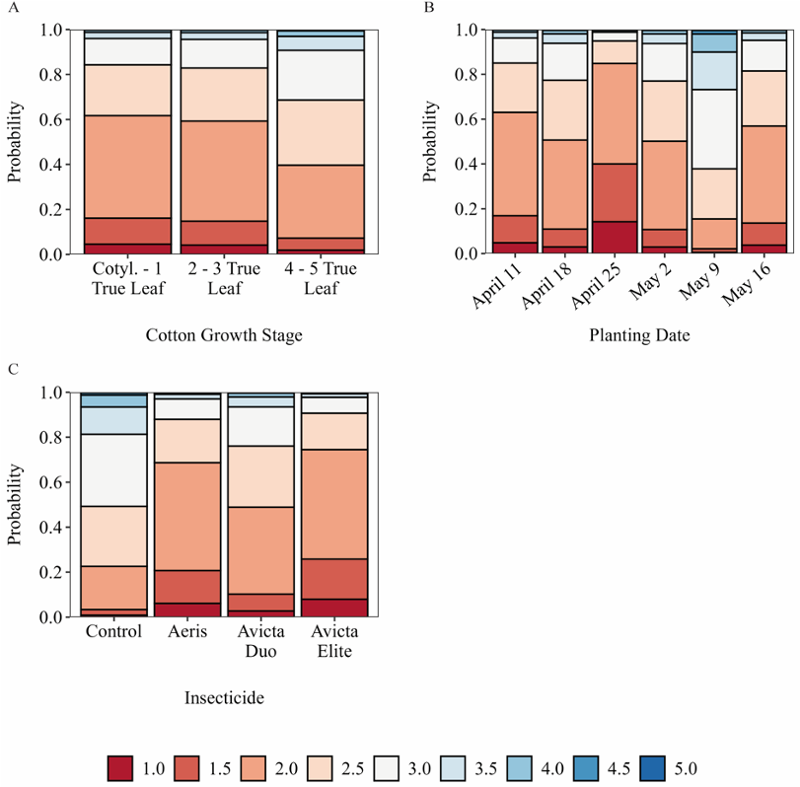The multidisciplinary, refereed journal contains articles that improve our understanding of cotton science. Publications may be compilations of original research, syntheses, reviews, or notes on original research or new techniques or equipment.
Highlights From This Issue

|
FEATURED ARTICLEArthropod Management The Effect of Neonicotinoids on Thrips Oviposition, Immatures, and Cotton Injury Jessica B. Mahas, Giovani Rossi, Anitha Chitturi, Bernardo Chaves-Cordoba, Scott H. Graham, and Alana L. Jacobson
DOI: (https://doi.org/10.56454/GQRL7530)
Pages: 77-86
Abstract
| Full Text PDF (940K)
The cumulative probability of seedlings receiving injury ratings (on a scale of one to five, one indicating little to no injury, and five indicating seedling death) analyzed by sampling dates (A), planting dates (B), and insecticide treatment (C).
|
|---|
